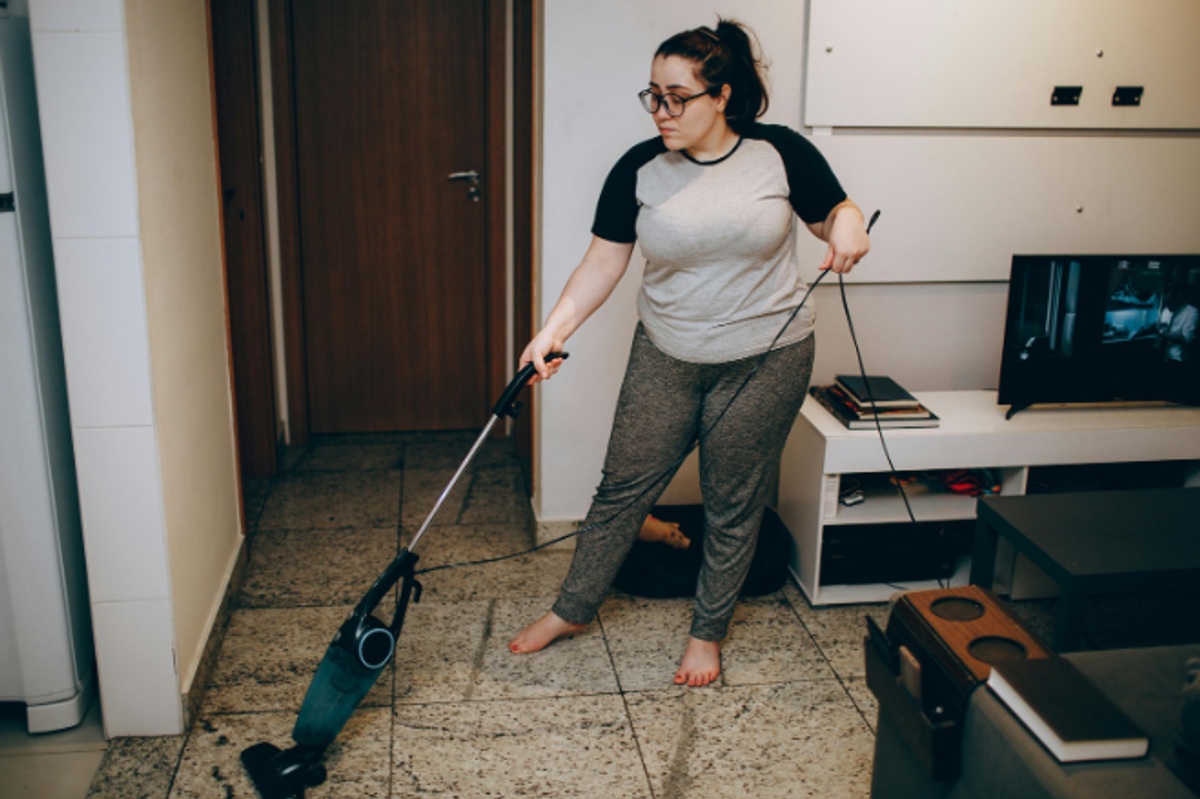She saw the dad who abandoned her living on the street. Then she fought to save his life.
The stunning before-and-afters of the homeless dad whose story went viral.
In April 2013, Diana Kim spotted her father for the first time in decades.
He was living on the street, disheveled and unkempt, and didn't have a clue who she was.
A photograph taken by Kim of her father while he was living on the streets. Photo courtesy of Diana Kim, "The Homeless Paradise."
As you can imagine, Kim — now 30 years old — didn't quite know what to think or how to feel. Her father had abandoned her when she was about 5, and she had no relationship with the seemingly homeless man before her.
"He hadn't been part of my life, he wasn't there," Kim explained. It was an emotional experience, "having to deal with my own personal feelings of being abandoned, and then at the same time recognizing that he's a person, just like [every other homeless person] I have reached out to."
"He wouldn't talk to me, wouldn't acknowledge me," she told Upworthy of that initial attempt to interact with him. "Then it started to really become clear to me that something is wrong with him mentally. He's mentally ill."
It was a unique situation for Kim, in particular, to find herself in.
Homelessness hit close to home for Kim long before she discovered her own father roaming the streets. She'd been an advocate for the homeless for years, and now her own father was among those she was fighting for.
Kim as a child, photographed with her father. Photo courtesy of Diana Kim, "The Homeless Paradise."
Kim grew up in Hawaii, which is trying to curb unrelenting increases in homelessness — including a 24% increase in chronic homelessness just last year. Kim's turbulent family life left her battling what she considers "transitional homelessness" as a teen. Kim, who chose not to talk about her relationship with her mother, had slept in parks, lived out of a car, and relied on the kindness of friends to put a roof over her head some nights.
In large part because of her personal experiences, Kim began using photography to bring more visibility to homelessness back in 2003. "When you grow up at an early age and you experience struggle, that shapes the way you see the world."
Little had she known how much her advocacy would come full circle.
Homelessness has become a dire issue in the Aloha State, where chronic homelessness increased by 24% last year.
Kim was an ally to those living on the streets but could also remember the pain left behind by an absent father. It was only because her grandma had called, distraught and asking for help, that Kim agreed to find her father in the first place.
"He hadn't been part of my life, he wasn't there," she explained. It was an emotional experience "having to deal with my own personal feelings of being abandoned, and then at the same time recognizing that he's a person, just like [every other homeless person] I have reached out to."
As Kim later learned, her father was schizophrenic, and he'd stopped taking his medication.
Photo courtesy of Diana Kim, "The Homeless Paradise."
Kim decided to fight for the dad who wouldn't even make eye contact with her — the dad she didn't know.
When she initially spotted him on the street, Kim's father did have a studio apartment he could go home to. But he lost it shortly thereafter — he'd been "scaring" his neighbors and wasn't able to take care of his personal hygiene.
"No one could get through to him," Kim explained. "He was evicted, and he had no place to go."
For the next several months, Kim routinely visited him on the street, trying to reconnect and persuade him to seek help. It was exhausting, and she didn't know if he'd survive.
But she did everything she could to help.
"At some point, you have to face your own fears and your own insecurities and your own pain," she told Upworthy. "And [for me] it was looking at my father and saying, 'That's my dad, and I'm going to help him, and I don't know what I have to do — I don't know what I'm supposed to do — to get through to him. But I'm going to stay with him and figure it out."
Photo courtesy of Diana Kim, "The Homeless Paradise."
Years ago, Kim started a photo blog, " The Homeless Paradise," that documents her interactions with Hawaiians living without stable shelter. After discovering her father, she began telling his story through the blog as well. Its pages are filled with tragedy, hope, and Kim's determination to help the world see Hawaii's homeless as people, not problems.
"I can't even count the number of times I have tried to get [my father] to accept clothing, and consider going to a shelter," she wrote in August 2014 about a particularly trying day with her dad. "Sometimes I walk away with a sense of defeat, other times I find myself feeling completely disconnected, and in this most recent encounter, I walked away feeling a mix of both."
In late summer 2014, Kim's father's health took a turn for the worse.
Someone called the police after finding him face-down on the sidewalk. Her father had suffered a heart attack. And because he had no ID or medical records, it took weeks for word to make it to Kim.
Photo courtesy of Diana Kim, "The Homeless Paradise."
Although her immediate reaction was overwhelming uncertainty — "I wasn't sure if he was going to make it" — medical attention ended up being the best thing for him.
In a way, his hospitalization was a blessing in disguise.
Her father's time in the hospital helped give him a new starting point.
Since his hospitalization about a year ago, Kim's dad has taken substantial steps forward in bettering his life. Now he's living in an assisted living residence and taking his medication, and Kim's relationship with him has evolved "day by day."
Upon his return to a healthier state, Kim learned that he'd battled serious mental health issues since 1990, which had affected his ability to nurture a relationship with her all those years.
Photo courtesy of Diana Kim, "The Homeless Paradise."
"To see my dad go from a place where he was really just a shell, and now to be filled again — with love, with hope, with dreams, and desire — it's an amazing experience," she said, noting he's even been able to get his driver's license again. "And I think that everyone who's out there is capable of it."
Kim's blossoming relationship with her dad further inspired her to build a career focused on helping those who need it.
With just one year left at the University of Hawaii's William S. Richardson School of Law, Kim plans to use her degree to help people who've been in her father's shoes.
She volunteers at a nonprofit that provides legal services to veterans and homeless individuals and, of course, is still using her camera and blog to tell the stories of Hawaii's homeless.
Photo courtesy of Diana Kim, "The Homeless Paradise."
"The camera itself has always been a catalyst for change in my eyes," she said. "But it's now bridging it with the world of law and policy, and being able to help shape the outcomes in our community that makes it really fulfilling and meaningful."
And perhaps the best part?
"He's really proud of me," she says.
Kim has also launched a Kickstarter to supply the homeless with a vital tool in keeping them safe: a bracelet.
"I realized shortly [after my father was hospitalized] how important it is to have IDs and other important documentation to reintegrate into society," she wrote on her Kickstarter page. "Many homeless individuals face the threat of losing their documents, having them stolen, or thrown away by city and county sweeps."
Kim's father looks at family photos. Photo courtesy of Diana Kim, "The Homeless Paradise."
That's why Kim partnered with CARE Medical History Bracelets in digitizing forms of ID and crucial medical documents for any homeless person who wants to participate. She aims to provide them with a bracelet so their personal information and health status can be more accessible to health professionals than her father's was.
The fundraiser is now closed, but it also helped Kim raise funds to produce photo books of "The Homeless Paradise." And Kim has told Upworthy that people can continue to support her work by donating or ordering prints of her photos on The Homeless Paradise blog. She says the proceeds will go for the ongoing efforts of the Kickstarter.
The past couple of years have been an emotional yet fulfilling roller coaster for Kim.
But one lesson she's learned is that love will always find its way into your heart if you let it.
"In the journey of emotionally and physically caring for my father, I learned that nothing can be truer than love," she wrote on her blog. "I love him. It doesn't matter what he did, or what he didn't do. The pain and suffering that he experienced, and caused me over all those years, didn't matter anymore. All that mattered was that he had the opportunity to live again, to function again, to have a second chance. And now he has it."
Photo courtesy of Diana Kim, "The Homeless Paradise."




 Beaver on riverbank.
Beaver on riverbank.  Pbs Nature Swimming GIF by Nature on PBS
Pbs Nature Swimming GIF by Nature on PBS  An actual beaver dam on the now-thriving Price River
An actual beaver dam on the now-thriving Price River 
 A child on an iPad.
A child on an iPad.  A mom showing her child how to play the drum.
A mom showing her child how to play the drum.  A mom scolding her son.
A mom scolding her son.  A mom guilt-tripping her daughter.
A mom guilt-tripping her daughter.  A teacher establishing rules to her class.
A teacher establishing rules to her class. 


 A woman ironing clothes late at night.via
A woman ironing clothes late at night.via  A woman doomscrolling at night.via
A woman doomscrolling at night.via 
 Urban raccoons have shorter snouts than rural ones, study shows.
Urban raccoons have shorter snouts than rural ones, study shows.